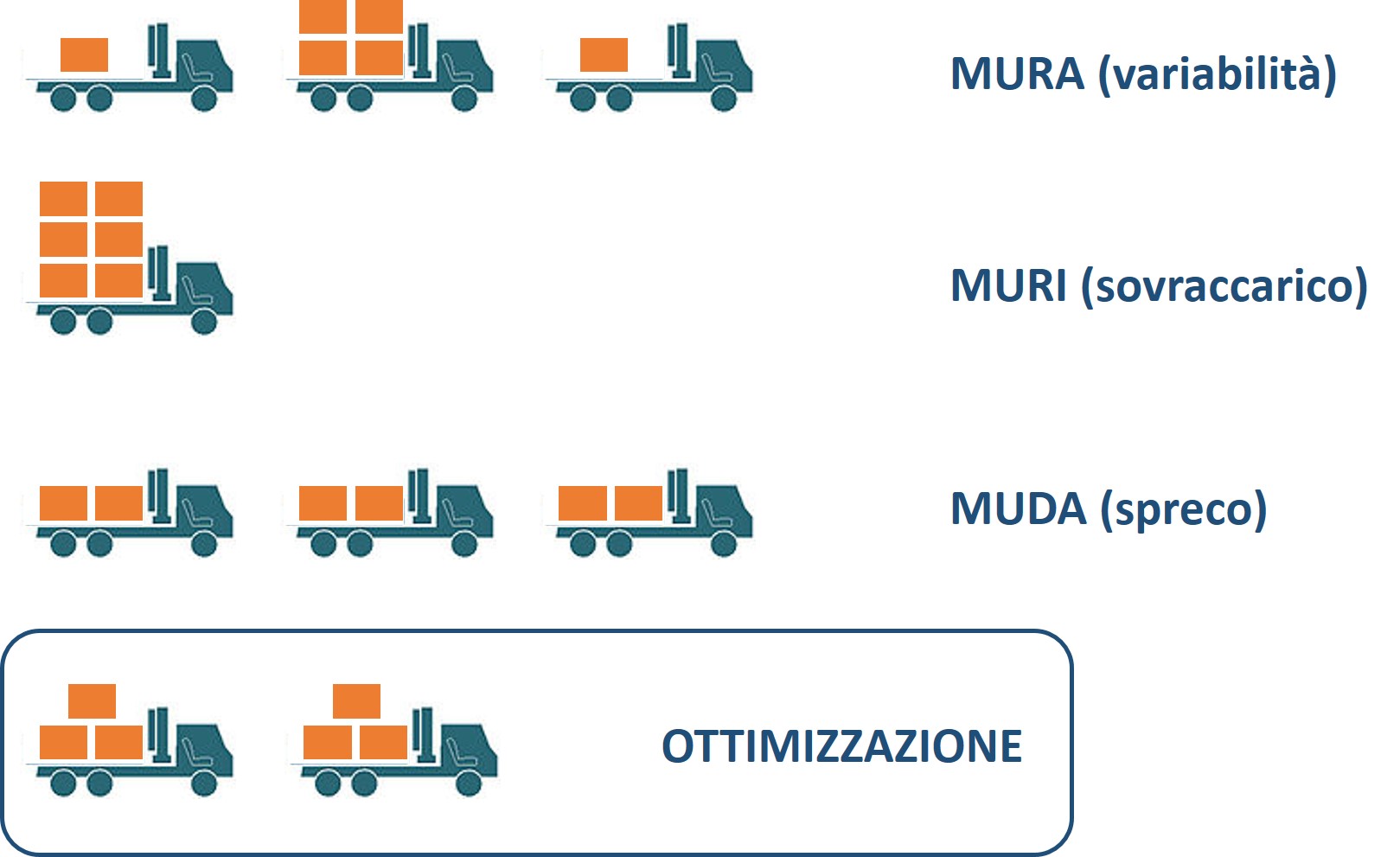ERP Selection and Implementation with Lean Thinking
One of the most important cornerstones of the Lean Thinking System, 3 Dangerous M; It has an important place in the establishment, operation and sustainability of ERP Systems. Called Muda, Muri and Mura , 3M plays an important role in the establishment of ERP through a single database, and in obtaining correct data and providing accurate reporting in accordance with the purpose after installation.
MUDA (non-value adding - Actions in the nature of wastage that prolong job completion times, cause unnecessary movements to pick up a material or tool, create excess stock, or result in any kind of waiting. In short, anything other than value-creating activities for which the customer is willing to pay is called waste in Lean Thinking.
These wastes are summarized in 7 basic categories:
- Inadequate working methods
- Long preparation times
- Inadequate processes
- Lack of education
- Insufficient maintenance
- Long distances
- Lack of leadership
MURI (overload) - In short, Muri means overloading by requiring equipment and personnel to work with higher performance over a longer period of time, with more force and effort than allowed. Muri produces safety and quality problems due to the inefficient planning of resources, which will lead to consequences such as overloading people. Overloading machines leads to malfunctions and product defects.
MURA (unevenness, unbalanced loading) - We can see this as the result of two other wastes. In normal production systems, sometimes there is more workload than people and machines can handle, and sometimes there is no work. Irregularity is caused by a fluctuating production schedule or by fluctuating production volume due to internal reasons such as wasted time and missing or faulty parts. The result of Mura may be Muda.
Mudas; Muri and Mura cannot be completely destroyed without being prevented. This extreme Japanese word, starting with the initial M, is called 3M, which refers to waste in businesses and needs to be eliminated.

The general tendency in our companies is to try to create an equivalent in software without criticizing our current way of working, without questioning why we are doing what we are doing. In fact, we automate our mistakes, in other words, we put our current waste into the software.
Software programs or automation systems are systems that will give the expected result as long as certain assumptions and conditions are suitable. From this point of view, all software are tools that the firm can use to achieve its goals. However, in many cases, we observe that ERP projects have ceased to be a tool, become an end in itself and begin to consume the resources that the company needs to use efficiently. In order for ERP projects to be successful, we should pay attention to the following points.
- The aim is to add value to the company. It makes no sense for the company which software is used, or with which programs the production and raw materials are planned and controlled.
Any software or automation program is meaningful to the extent that it contributes to perfecting the value provided to the firm.
That is, ERP systems are valuable if they provide the following items:
- Increase speed,,
- To increase the quality,
- Provide flexibility,
- Lowering costs.
One of the most important values that ERP provides is that the company combines important information and information that everyone should share in a common database. In cases where there is no common database and everyone provides information from different sources, there may be different information from each other, which may lead to wrong decisions. Let's assume that two different production units make raw material pricing independently of each other. In this case, it will not be possible to determine the correct cost information of the product, to go to a general pricing based on this, to calculate the profitability of the product correctly, and then to decide on possible campaigns to increase sales, or it may lead to harmful results for the company. From an engineering point of view, the implementation of a product development in two different units is a very difficult process to continue, as it would mean both skipping and actually revising the same work, for example, the same product tree, twice. In the case of a single database, since all data is in a single source, the possibility of error is reduced and the process is easier to follow in general.
The main purpose of companies using MRP software is to follow stocks and accordingly to plan material requirements. The most important reason for the managers to make this investment is to determine the stage of production, how much raw material and product stock there is, etc., at the click of a button. is to see. However, in many companies, there is a difference between the amount of stock taken from MRP and the actual stock amount.
The main goal of all companies is to deliver the required products to customers on time and with the required quality, and to maintain a certain profitability at the lowest cost. But at this time, the entire production process must be regarded as a whole. The company's production capacity, operating time, storage capacity, delivery time and other parameters should all be considered together. In the context of the results to be achieved, it should be determined when the company should adopt which production process, what waste can be eliminated through changes, and how to achieve the expected quality level at the minimum cost. Only in this way can you decide whether to choose software or an automated system.

Kurulacak olan ERP’nin seçilmesinin ardından ERP Projesi’nin sağlıklı bir şekilde yönetilebilmesi için firmanın proje ekibi ve ERP danışmanlarından oluşan doğru ekibin kurulması gerekir. After selecting the ERP to be installed, a suitable team composed of the company's project team and ERP consultants must be formed to manage the ERP project in a healthy manner. Then, all users will receive complete ERP training. If this training is not provided, the ERP consultant will have to assume the role of the user after installing ERP. This led to Muda. Likewise, as part of the team, the ERP consultant should not withdraw support for the team. He must always actively control the communication between the project manager and the user. This prevents the process from being corrected again and again, and conforms to the just-in-time principle, which is the most important principle of lean production. It paved the way for new steps in the development of ERP systems.
Since 3M has carefully installed the ERP system, the correct data is recorded in a public database. Instant, error-free, and flexible reports from this data can be used to achieve results that improve quality and reduce costs.
Seda KESİMCİ







